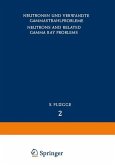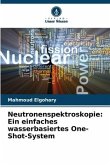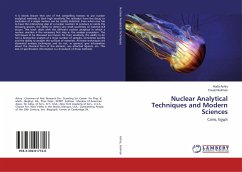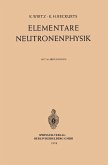Bachelor Thesis from the year 2015 in the subject Physics - Nuclear Physics, Molecular Physics, Solid State Physics, grade: 2,0, Technical University of Darmstadt (Institut für Kernphysik), language: English, abstract: The NEPTUN tagger is a setup which uses LaBr3 detectors. The calibration of them is challenging since the channel-to-energy relation is not linear and energy drifts can occur. The quality of the calibration increases by using high-energy -ray sources. Neutron capture reactions (n,) with lathanum, bromine and chlorine which provide energies up to 8.5MeV are investigated with experiments and simulations. A moderator can deaccelerate the neutrons and that is why it increases the cross section for these reactions. Therefore the moderator thickness is analysed for an polyethylene exemplary. A thickness between around 5 cm is indicated as best choice. The lanthanum and bromine in the detector provides sharp peaks, as shown in the experiments. Chlorine target adds additional peaks to the spectrum. It is now possible to build an efficient and compact calibration setup.Der NEPTUN-Tagger ist ein Messaufbau, der LaBr 3 -Detektoren benutzt. Die Kalibrierung derer ist herausfordernd, da die Kanal-zu-Energie-Relation nicht linear ist und Energieverschiebungen auftreten können. Die Kalibrierungsqualität kann über hochenergetische Gamma-Strahlen-Peaks gesteigert werden. Neutroneneinfangreaktionen (n,Gamma) mit Lanthan, Brom und Chlor, welche Energien von bis zu 8.5MeV liefern, werden mittels Experimenten und Simulationen untersucht.Ein Moderator bremst Neutronen und kann daher den Wirkungsquerschnitt der Reaktionen erhöhen. Aus diesem Grund wurde die Dicke des Moderators am Beispiel von Polyethlen untersucht. Es zeigte sich, dass eine Dicke von etwa 5 cm die beste Wahl ist. Lanthan und Brom im Detektor erzeugen scharfe Peaks wie die Experimente zeigten. Zusätzliche Peaks im Spektrum lieferte das Chlor-Target. Nun ist es möglich, eine effiziente und kompakte Kalibrierungsquelle zu bauen.








